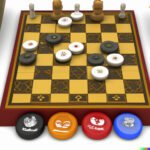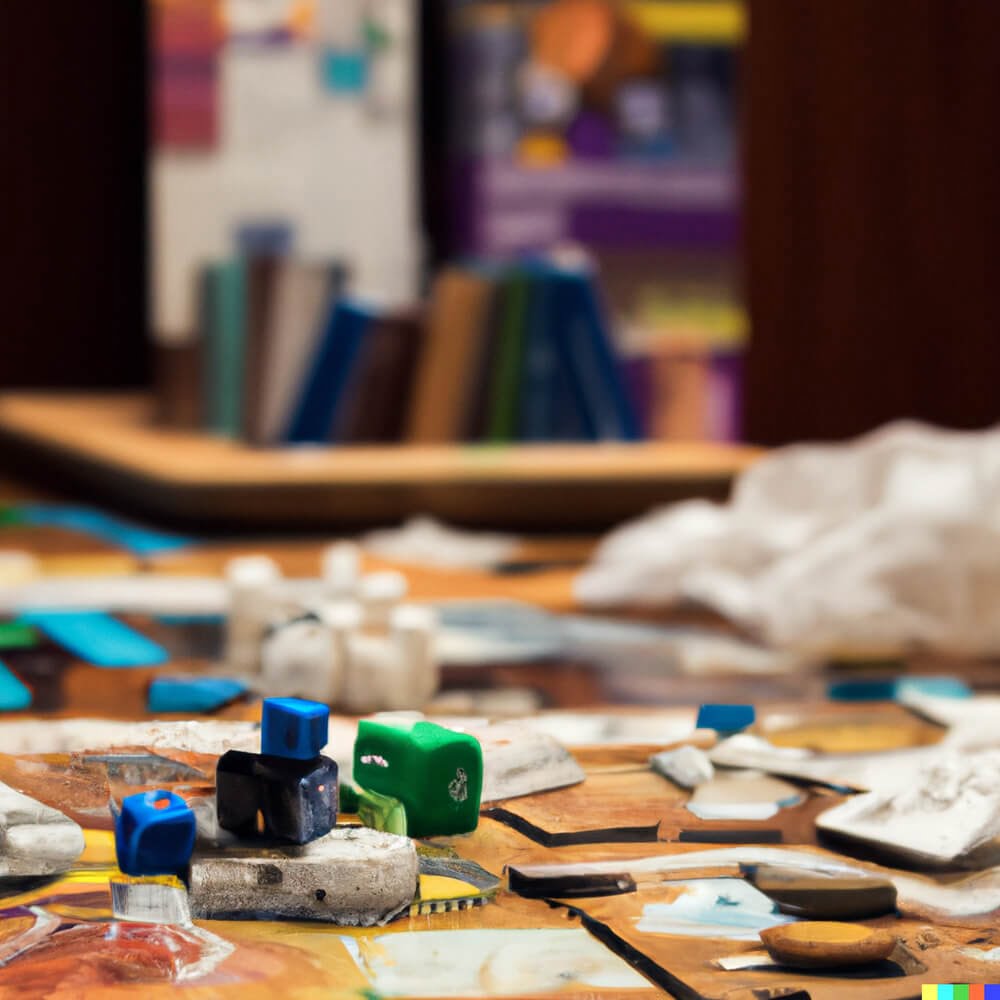Introduction
The Life board game has been a popular pastime since the 1960s. It is a game where players can experience life’s everyday adventures and challenges. Players simulate life through buying property, getting married, having children and even retiring from work. In addition to having fun, the game helps to teach its players about the rewards and consequences of decisions taken in life. The game also promotes values such as cooperation with others in order to gain success and independence in each player’s respective lifepath. All of these elements combine to make Life an enjoyable and educational experience for players of all ages.
History
The Life Board Game is a timeless classic first released in 1960 by the Milton Bradley Company. The game was inspired by the 19th-century board game The Checkered Game of Life, created by Milton Bradley himself. This original version was much more difficult and time consuming than the one we know today, prompting Milton to create a simpler recreation of it with the intention of informing players about life decision making.
The Life Board Game quickly became one of the most popular board games on the market and its popularity has not wavered since. Throughout its 60 years in production, it has seen variations featuring different themes and pop culture references such as Monopoly Junior: The Game of Life, The Simpsons: The Game Of Life and Yoda’s Adventure: A Web-Playing Experience. These iterations have kept the game’s popularity alive among generations of players, reinventing classic features and inspiring new ones for modern play.
Overall, this classic beloved board game has changed the face of gaming forever due to its accessibility, simplicity and longevity; it takes knowledge from classic board games like checkers to tell stories and inform people’s decisions while continuing to entertain players with new content every other year!
Different Versions
The classic version of Life, first released in 1960 and developed by the Milton Bradley Company, quickly became an American tradition. It was inspired by the 1883 game The Checkered Game of Life, originally devised by an American clergyman as a moral substitution to a choice between good or evil. The objective of this game was fairly simple – collect a certain amount of money and reach retirement first – but with the addition of car tokens, villas and other game pieces, it quickly gained popularity for its fun and interesting elements.
Since then, different versions of The Game of Life have been released over the years. In 1992, a deluxe edition was released featuring more realistic pieces that incorporated bills instead of play money. This double-sized board featured three different paths – to college, business or retirement – allowing players to further customize their experience.
After the success of this edition, subsequent releases began adding various twists and expansions to the base game such as careers, additional vehicles and charities. One notable version is The Game Of Life: Twists & Turns which added risk cards as well as characters in place of cars for a more exciting iteration. While these variations are designed for more advanced players, there are also versions available for younger players such as My Little Pony Edition from 2012 and Disney/Pixar Cars 3 Edition from 2017 that feature simplified rules suitable for children.
Over the years, Life has become widely recognized as one of the most successful board games ever created due to its continued impact on popular culture throughout generations; playing this game has been labeled a rite-of-passage for many families due to its high replayability level combined with its educational value teaching young people about life decisions outside of school including job choices, marriage or home buying decisions that could be made in real life. Considering all this information, it’s easy to see why so many generations have identified with this iconic fictional life simulation game over time; no matter what version is played today “the original classic or latest modern expansion”it still successfully conveys lessons about financial management while passing through generations like an heirloom piece.
Classic Life Board Game
The classic version of the Life Board Game was first released in 1869 and has been enjoyed by generations ever since. It plays out like a journey through life and offers lots of choices that can lead to either success or failure.
Players start with $10,000 each and race to the end of the board while accumulating wealth, accumulating debts, getting married, having children, buying houses, graduating college and retiring. Each player moves around the board in sequence as determined by a spin of a wheel. Depending on which space one lands on different consequences will occur – for example players may pick up career cards which can give additional income or may have to pay taxes or take out a loan from the bank. Other squares award bonuses such as money from ‘life insurance’ you have taken out in advance or make an unexpected gift from grandparents.
The goal is to accumulate the most money and assets at retirement point by strategically managing your finances as fortune can turn at any moment!
Unlike modern versions of the game there are only two ways to win: either reaching Retirement with the most money or investing smartly and becoming a ‘millionaire’ before then. The modern version has been slightly easier to win but it still requires strategy to come out ahead.
Popular Life Board Game Versions
The Classic American Game of Life: This game is the original version which has been around since1960. Starting with the traditional plastic car pieces, players begin with a career and salary, then follow the winding path to retirement. The objective of this game is to be the player with the most money at the end and win. The rules are fairly straightforward: land on a square and spin the spinner to determine your next move. The spinner can take you down Career Paths, give extra money or life tiles (like Marriage or New Baby), or even send you to a financial setback square like Tax Refund Lost. Players can also get rewarded for each milestone they reach such as getting married, buying a house, retiring, etc. This version has been enjoyed by families for generations and makes a great gift for any age group!
The Game of Life Adventure Edition: With this game comes an exciting twist – it’s like no other Life board game out there! Instead of following a set career path you have the chance to choose an epic adventure and make your own choices along the way. You still spin to move forward but instead of landing on squares events you land on unique locations from skydiving over Mt Everest to exploring pirate islands. Every turn brings unpredictable surprises so there’s never a dull moment in this fast-paced game of action and adventure! It also includes real-life lessons; players have chances to earn rewards if they make wise decisions during their adventures such as saving money or investing in stocks wisely. If you’re looking for something fun to play with family or friends we highly recommend this one!
The Game of Life Theme Park Edition: Want even more excitement? Then check out this edition! As its name suggests it takes you on a wild theme park ride filled with thrills, spills and awards at every turn! Start off by choosing one of five roller coaster cars that represent your life journey then get ready for an adrenaline rush when you spin. Shifts in luck allows players collect awesome awards like free entrance into amusement parks free parking tickets plus so much more along their crazy ride throughout life if they make smart decisions during its ups & downs! With plenty of options when it comes playing modes (kids league, elimination rounds & head-to-head competition) It’ sure keep everyone entertained!.
Life Board Game Strategies
1. Avoiding Unexpected Expenses: It’s important to be prepared for costs that may arise during the game. To ensure that you save enough money and don’t get caught off guard by expenses, come up with a strategy to have extra money saved just in case. This is especially important when it comes to college and career choices, since they could potentially lead to financial surprises down the road.
2. Start Building Early: Another key strategy is to secure your future early on in the game. Setting yourself up with secure investments such as properties or stocks that can generate income later in the game gives players an advantage when it comes time to retire or pay down debt. Players are also encouraged to begin paying off their mortgage as soon as possible, as this will result in more money saved for other opportunities during the game, such as marriage or having children.
3. Diversify Your Assets: A diversified portfolio of assets which includes stocks, mutual funds investments, insurance policies, savings accounts etc is a great way to maximize your chances of winning Life Board Game versions. Taking out insurance helps protect your cash flow against potential disasters while investing in mutual funds can provide additional income over time if managed correctly.
4. Save For Retirement: Planning for retirement early on in the game can reap many rewards towards the end of it ” so try and save money right away for retirements including pensions and tax-free savings accounts, along with any other retirement investments you might make along the way such as real estate or shares in companies etc
5. Minimize Risky Decisions: While there are always decisions that need to be made during the course of playing life board games which involve risks versus reward (such marrying someone with large credit debt or going abroad for a job), attempting to minimize these types of decisions is recommended because higher risks often mean bigger payouts – but also greater losses if things don’t go according to plan!
Conclusion
Over the years, versions of the classic board game Life have changed and evolved in order to keep up with technology, appealing to players who have various age groups, abilities, and preferences. Despite these changes, Life remains a popular board game among players all around the world. The most recent version of the game includes a spinner and new cards that allow players to make decisions about their financial situations as they go along. Additionally, digital versions of the game can be found in apps both for smartphones and virtual consoles. With its versatile nature, it’s not hard to see why Life is still popular after so many years. Looking towards the future, there is much potential for further growth and development in this classic board game, making it an exciting choice for something suitable for multiple generations.

I love playing all kinds of games – from classics like Monopoly to modern favourites like Ticket to Ride.
I created this blog as a way to share my love of board games with others, and provide information on the latest releases and news in the industry.





